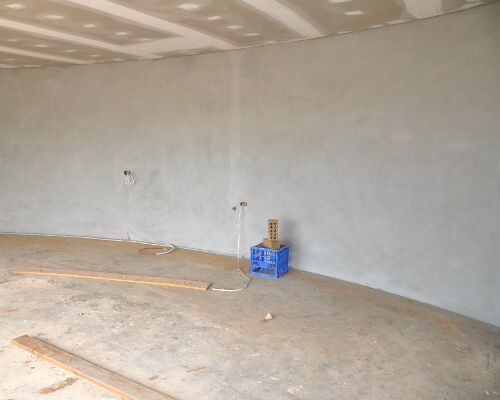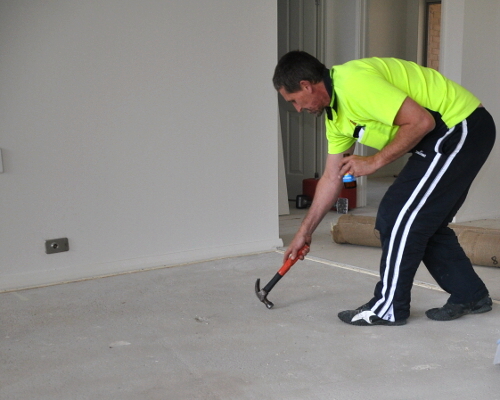Dealing with problem subfloors
 Audio for slide 3 (mp3 |6|KB)
Audio for slide 3 (mp3 |6|KB)
If the problem is not too extensive, you may be able to use hardboard nails on the soft sections.
Alternatively, you can fix the carpet gripper into place with adhesive.
If the whole surface is drummy, you may have to remove it completely and apply a levelling compound to replace the surface layer.
In this case, the gripper should be stuck down with adhesive.

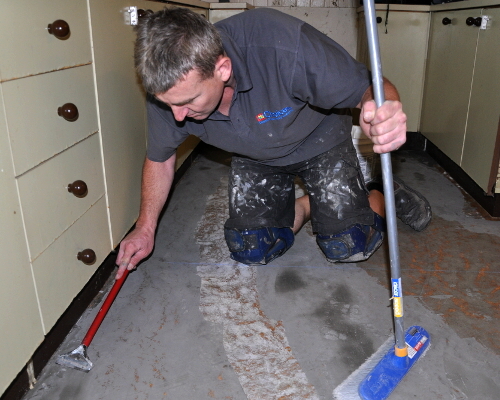 Audio for slide 4 (mp3 |6|KB)
Audio for slide 4 (mp3 |6|KB)
Aggregate surfaces
Poorly finished concrete sometimes shows the aggregate (or 'screenings') protruding above the surface.
This makes it hard to achieve a firm base for the gripper to sit on.
One solution is to grind the surface flat with a grinder.
Another is to chip out the exposed aggregate and apply a filler or levelling compound.
If you do need to use a levelling compound, the gripper should fixed be with an adhesive.

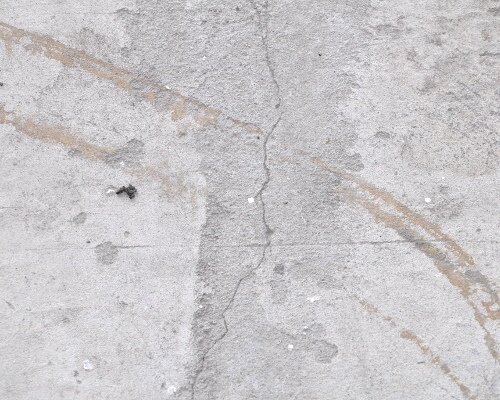 Audio for slide 5 (mp3 |6|KB)
Audio for slide 5 (mp3 |6|KB)
Sandy surfaces
Sandy surfaces are often found in renovated houses, especially where a fireplace has been removed and the surface is filled with a mortar mix rather than concrete.
Hardboard nails are better than concrete nails in this type of surface material, although you may need to use a longer length nail, such as 50 mm.
Alternatively, you can prime the surface and then apply an adhesive.
A similar problem with crumbling subfloor material can occur in aerated concrete floors.
One example of an aerated concrete product is Hebel Powerfloor, which is installed in 75 mm thick panels and generally laid over floor joists.
To ensure that the gripper is soundly fixed, prime the subfloor surface first, apply adhesive, and then fasten the gripper strip with 50 mm spiral shank nails.

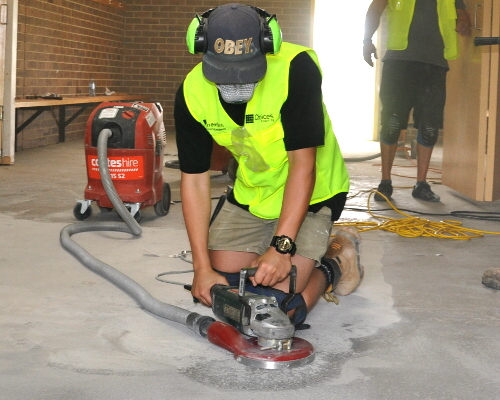 Audio for slide 6 (mp3 |6|KB)
Audio for slide 6 (mp3 |6|KB)
Uneven surfaces
Ridges and hollows cause problems when the carpet gripper is unable to sit flat, which often shows up in the completed installation.
In these instances, you will need to grind down the high spots and you may also have to fill in the holes and low spots with a suitable filler.
Again, this will affect the fasteners you use to fix the gripper into place.






